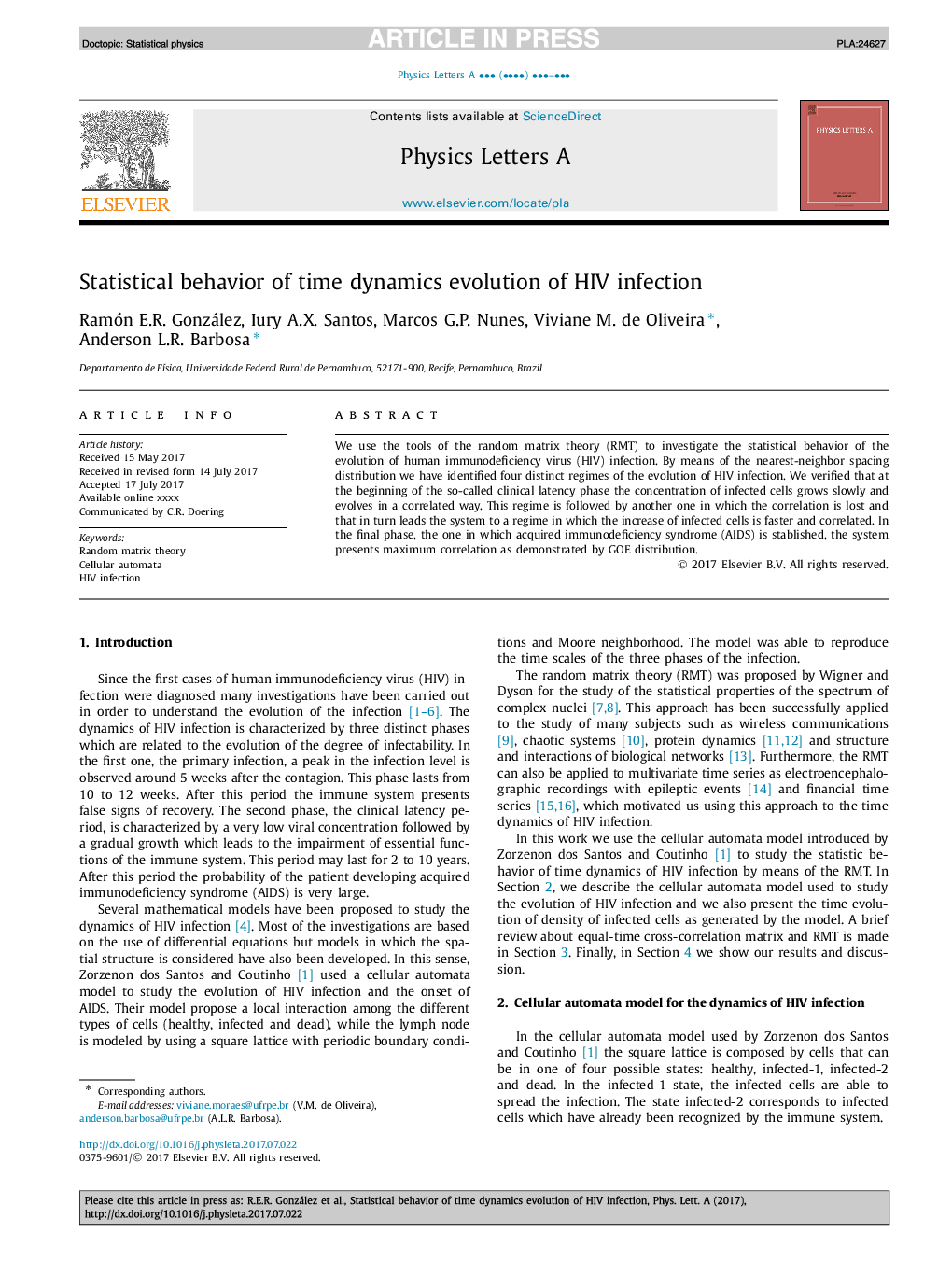| Article ID | Journal | Published Year | Pages | File Type |
|---|---|---|---|---|
| 5496337 | Physics Letters A | 2017 | 5 Pages |
Abstract
We use the tools of the random matrix theory (RMT) to investigate the statistical behavior of the evolution of human immunodeficiency virus (HIV) infection. By means of the nearest-neighbor spacing distribution we have identified four distinct regimes of the evolution of HIV infection. We verified that at the beginning of the so-called clinical latency phase the concentration of infected cells grows slowly and evolves in a correlated way. This regime is followed by another one in which the correlation is lost and that in turn leads the system to a regime in which the increase of infected cells is faster and correlated. In the final phase, the one in which acquired immunodeficiency syndrome (AIDS) is stablished, the system presents maximum correlation as demonstrated by GOE distribution.
Related Topics
Physical Sciences and Engineering
Physics and Astronomy
Physics and Astronomy (General)
Authors
Ramón E.R. González, Iury A.X. Santos, Marcos G.P. Nunes, Viviane M. de Oliveira, Anderson L.R. Barbosa,
